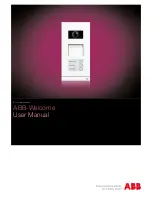
121 effects
It is this edge which plays a key part
in the overall performance of the
units.
SOFT DOME HF UNIT
Fostex could have opted for a
standard soft dome tweeter for the
NF-1/NF-1A. But as good as these
are in standard form, Fostex felt the
need to develop a new type of soft
dome unit, one which features UFLC
in its construction.
Conventional soft dome units exhibit
minute ‘pinholes’ in the damping
materials resulting in dips in the
frequency response. In using UFLC
materials, Fostex have eliminated
these, made a 30% weight reduction
and widened the frequency response
across the range.
But all this attention to detail would
have counted for nothing if Fostex
had, like others, used plastic or
pressed metal driver frame
assemblies.
This is because these types of
construction do not, unlike the die-
cast aluminium frame used for the
woofer and tweeter units in the NF-
1/NF-1A, offer optimum vibration
suppression.
ENCLOSURES
A monitor enclosure is much more
than just the box in which to house
the driver units. It too must be
acoustically designed to minimise
the vibrations which can colour and
degrade the sound.
The NF-1/NF-1A time-aligned bass-
reflex enclosures features a number
of construction and acoustic
treatment techniques, which
combine to offer an ideal chamber
for suppressing vibration and
unwanted reflections.
These include:
■
A unique internal baffle
configuration (patent applied
for), using HP sound reflectors
to naturally extinguish standing
waves.
■
21mm thick super-rigid MDF
particle board for the main
enclosure construction
widening to 33mm where the
drivers are mounted.
■
Rounded edges on the front
baffle for reduced reflection of
mid-frequency sounds.
■
Two precisely tuned 2"
cylindrical ports for increased
bass response whilst
maintaining a compact
enclosure.
T H E T R U T H
Hooking up a pair of Fostex NF-1’s
or NF-1As for the first time is
somewhat of a revelation. You may
be surprised at what you hear. Your
material may sound better. It may
sound worse. But at least it will be a
true representation, free from any
sonic coloration and distortion.
Which is where we came in.
P
R
O
F
E
S
S
I
O
N
A
L
N
E
A
R
F
I
E
L
D
S
T
U
D
I
O
M
O
N
I
T
O
R
S
NEWLY DESIGNED
BASS REFLEX SYSTEM
Although the NF-1/NF-1A uses a bass reflex
enclosure, Fostex have, again,
re-worked the technology to provide real
gains in terms of bass response
characteristics.
This has involved the active utilisation of the
reverberent sound caused by the internal HP
reflectors which exits the enclosure through
the two bass-reflex ports.
(Something which is just not possible with
enclosures which only use conventional
glass fibre for internal damping).
The placement of the exit ports was also
critical in allowing a smooth and natural
blending of the sound coming from the
woofer and tweeter units.
P
R
O
F
E
S
S
I
O
N
A
L
N
E
A
R
F
I
E
L
D
S
T
U
D
I
O
M
O
N
I
T
O
R
S
INTERNAL
ARCHITECTURE
The internal architecture of an
NF-1/NF-1A has been
acoustically designed to
minimise resonances and
vibration which can add
unwanted colour to the sound.
HP SOUND
REFLECTORS
The inclusion of HP sound
reflectors prevents the
generation of standing waves in
the enclosure.
Like the HP drivers, the
constantly varying 3rd-order
curved surface of the HP
reflectors, along with their
carbon fibre/PBO construction
minimises self resonance.
NF-1 CONNECTIONS
For optimum performance and
flexibility, the NF-1 features a
4-terminal connection hub.
This allows for bi-wiring and
bi-amping techniques.
NF-1 CROSSOVER
DESIGN
The extremely natural and
ultra-smooth transition
between woofer and tweeter
units is due to another
breakthrough in monitor
design.
While the high frequency UFLC
tweeter unit uses a low loss
6dB crossover, the smooth roll
off of the low frequency
woofer, (afforded by the
unique HP diaphragm
technology), renders the use of
a crossover for this unit
obsolete.






















